Flan | Caramel Custard
Flan | Caramel Custard
This post would hands down win the longest-time-in-blog-drafts award, if there was one. The first time I put together this post was in 2012, sometime around the holiday season when a friend of mine asked me if I had a good flan recipe. I gave her what I considered my best back then. But for one reason or the other, I kept from posting the recipe. It just wasn’t the recipe yet. Almost 6 months later, I tasted one of the best flans I’ve had to date at a restaurant here in Colorado. It was on Cinco De Mayo. Less than 2 weeks later, I tried to re-create it. No one recipe seemed right, so I decided to experiment with the ratios. What I learnt from the process was that milk was simply not going to do it if I wanted that super-dense rich and creamy version of flan that I was craving. It was little A’s 2nd birthday and flan was served for dessert. This time I substituted some of the milk with heavy cream, and I am pretty sure mom added at least 1 more egg than I told her to. The result was a really rich and creamy flan, but between the 2 cooks none had an idea what exactly went into it measurements-wise. So this post was still not happening.
A few more attempts later, including one big flan-flop episode (burnt caramel, overcooked flan – need I say any more?), my quest to master the art of making the perfect flan looks to have come to an end now. And what did I learn – the recipe really does not matter, as long as you understand the technique and know what contributes to the texture. Here are some things I’ve learnt along the way, which I hope will serve you well too:
- More cream and less milk makes it really dense. Also, you need enough eggs or the custard will not set – that is, at least double the eggs to the count of cups of milk/cream mixture (2+ eggs for 2 cups milk).
- You really should watch your caramel and take it off the heat if its turning dark too soon. The caramel will continue to cook some more off the heat, so don’t wait for it to reach the final color while on the heat.
- Whisking the eggs too much introduces air bubbles which leads to bubble-spots in the finished flan. Try and mix the eggs and sugar together first and then add milk. I’m still working on the flawless smooth texture.
- You don’t have to fuss with tempering the eggs. Just straining the custard mixture is good enough.
- Don’t skip the bain-maire (water bath) setup, and pour the hot water after the roasting pan goes into the oven or not only will you struggle with the weight, you’ll also risk spilling water into the flan dishes.
Overall, this version of the recipe is so effortless to put together that a few bubbles aren’t going to get in your way. And remember, you will not want to finish this in a hurry. So take the time, savor every spoon, and let the world go by. Flan’s always been my favorite dessert and now I know that in less than 10 minutes, it’ll be on its way baking away to deliciousness.
It’s Cinco De Mayo time of the year again. And my little boy is another year older. Old enough to start bringing me flowers (the flower below is from little A to mommy dear!). To me, it seems like this flan post was just waiting for the perfecto tiempo!
Flan | Caramel Custard
Serves: 8 (use serve size ramekins or 1.5Qt dish) | Prep Time: 10 minutes | Baking time: 50 minutes for small ramekins, 60 – 65 minutes for larger containers | Resting time: at least 2 hours, or up to 2 days
Ingredients:
Custard filling
- 1 cup whole milk (or 2%)
- 1 cup heavy cream
- 4 large eggs
- 1 tsp vanilla extract
- 6 tbsp sugar
Caramel
- 1/2 cup sugar
- 1/3 tbsp butter
Method:
Preparation:
- Pre-heat oven to 325 degrees F.
- Keep the baking dish(es) ready at hands reach.
Making the caramel:
Be very careful while handling the pan with the caramel – it is super hot. Also, the caramel coated baking dishes can get very hot too, so work with mittens to avoid burns.
- Add 1/2 cup sugar and the little butter to a pan (non-stick works well for this) on med-high heat.
- Evenly distribute the sugar by gently tossing the pan by its handle. You can use a ladle to do this until you notice the sugar starts melting.
- The sugar will begin to dissolve, and slowly turn golden in color as it melts. Swirl the pan a little to help distribute the heat in the beginning but stop once the caramelization begins.
- When the sugar’s almost all melted, lift the pan away from the direct heat and swirl until it has fully melted and turned into a rich golden brown color (like honey).
- Note: If caramel begins to boil or if the color gets deeper to a dark rust-like hue then it has overcooked and will have a slightly burnt/coffee flavor.
- Act quickly, and pour the caramel into the baking dish or spoon it onto the ramekins and swirl the dish(es) to evenly coat the caramel at the bottom of the dish.
- Note: Caramel cools very quickly and so it is important to do this immediately after the sugar has fully melted and turned the right shade of amber or it will solidify.
- Set aside to allow the caramel to set fully in the baking dish for about 2-5 minutes before pouring the custard mix into the dish.
Making the custard filling:
- Combine the eggs and sugar together until fully dissolved, but don’t whisk too much as the aeration affects the smooth texture of the flan.
- Add the milk, cream, vanilla and combine.
- Pour the custard mixture into the baking dish(es). Optional: strain this mixture into the baking dishes for a silky-smooth texture.
Baking in a bain-marie:
- Place the baking dish or ramekins onto a roasting pan that can accommodate all the dishes and place it in the pre-heated oven.
- Bain-marie or water bath: Fill the roasting pan with hot water until flan dishes are more than half sunk in it. This ensures even cooking of the custard and regulates the temperature better for slow baking.
- Bake for about 40-50 minutes or until the flan is set. Larger dishes take longer, even more than 60-65 minutes so it is important to keep checking every 5 minutes after 40 minutes of cooking until done.
- Note: Check by gently tapping the dish to see if the entire flan jiggles or only the center jiggles. But the flan should not be wet at all. On the other hand, if it does not jiggle at all and is fully set then it has been overcooked and will have too many bubble-spots on the outside layer.
- Remove from the oven, let it cool down, cover with cling wrap or foil and refrigerate for at least 2-3 hours (or overnight, and even a day ahead).
Serving the flan:
- Once set, remove from the refrigerator and run a small sharp knife around the edges of the flan dish to gently loosen it up.
- Flip the flan over a plate or serving dish. Tap around and over the dish to ensure the flan is fully disengaged from the baking dish.
- Gently remove the baking dish, allowing the excess caramel to flow over the flan.
- Slice into serving portions (if made in a large baking dish and not ramekins). Spoon some of the extra caramel onto the flan and serve!




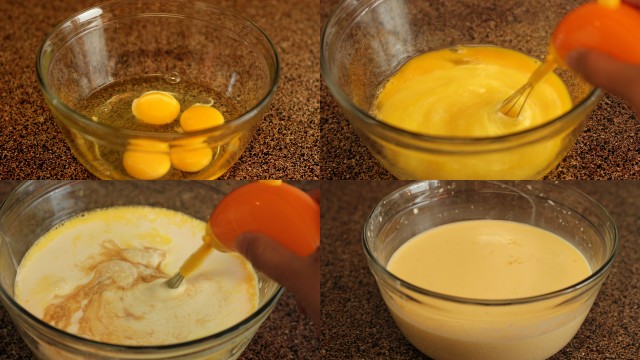




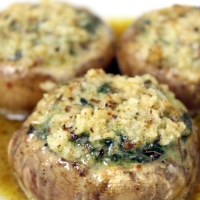
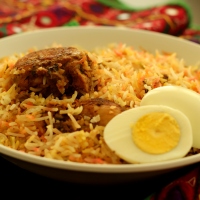




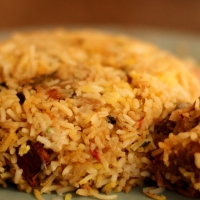

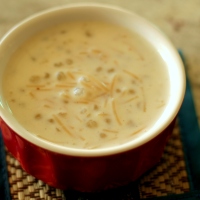
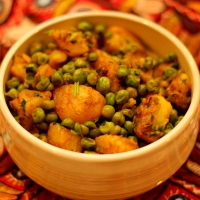
I read this article completely about the resemblance
of newest and preceding technologies, it’s amazing article.
Yummy, yummy, yummy. Super, duper.